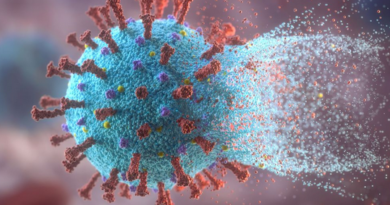Tracking Covid into wastewater
Patrick Monfort, director of research at the CNRS in the field of microbiology and ecology of human pathogens in aquatic environments, answers questions from Le Monde journalist Sylvestre Huet and explains the detection of COVID-19 in wastewater. He explains that SARS-CoV-2 RNA, or COVID-19, has been detected in the faeces of certain Covid patients but also in asymptomatic patients. Therefore, the search for Covid-19 in wastewater appears to be a logical next step. The technique for detecting the virus in wastewater is the same as for PCR tests. But for this, a certain minimum concentration is obviously required, which, as Patrick Monfort explains, is 1,000 genomes per liter of water. Reference [1]

Photo of a sewage treatment plant, Reference [2]
He also informs that in March-April 2020, at the peak of the epidemic in France, Parisian teams detected more than a million genomes per liter in the treatment plants. Even though he immediately reassures us that the virus does not appear to be infectious in wastewater, evidence seems to show the opposite. Moreover, the monitoring that has been done in certain cities allows us to follow the real evolution of the Covid in the population, with a peak in March-April followed by a decrease with containment and an increase in June-July. In spite of this, Patrick Monfort explains that the Covid measured in the water does not give the number of infected people because there is a lack of knowledge about the quantities of virus excreted and this depends on the stage of the disease. But this detection method is still useful in the case of clusters, tests are carried out with the waters of Montpellier University Hospital in order to be able to link the quantity of Covid in the wastewater to the number of Covid patients.

Hand wash, reference [2]
But the detection of Covid in wastewater, like PCR tests on the population, only shows the situation at the time of sampling and not the evolution. This would require regular measurements and would cost a lot of money. But this technique is complementary to the others and can be used for particular places, such as airports or retirement homes. This method makes it possible to have the evolution of Covid cases before they arrive at the hospital, as in Italy, in Milan and Turin, where Covid was found in samples dating from December 2019, whereas the first official Covid case in Italy dates back to mid-February 2019, as Céline Deluzarche, journalist for Futura Santé, explains (Reference [3]). Whereas in Spain, in Barcelona, samples from March 2019 contained Covid according to a study still in the pre-publication stage and whose results could be false positives according to Dr Joan Ramon Villabi, from the Spanish Society of Visology (Reference [4]). But in any case the Covid seems to have been in Europe long before the first official cases were detected.
References:
[1] Le Monde, interview of Patrick Monfort : https://www.lemonde.fr/blog/huet/2020/08/10/traquer-la-covid-19-dans-les-eaux-usees/
[2] images from a free-use database, available on: https://pixabay.com/fr/
[3] Futura Santé, Covid in Italy, available on: https://www.futura-sciences.com/sante/actualites/coronavirus-mais-depuis-court-coronavirus-patients-infectes-italie-septembre-2019-80237/
[4] Futura Santé, Covid in Europe, available on: https://www.futura-sciences.com/sante/breves/coronavirus-coronavirus-circulerait-europe-depuis-mars-2019-2824/



![[1] More and more smoke](https://risk-info.org/wp-content/uploads/2021/01/page-de-garde-macedoine-390x205.jpg)
